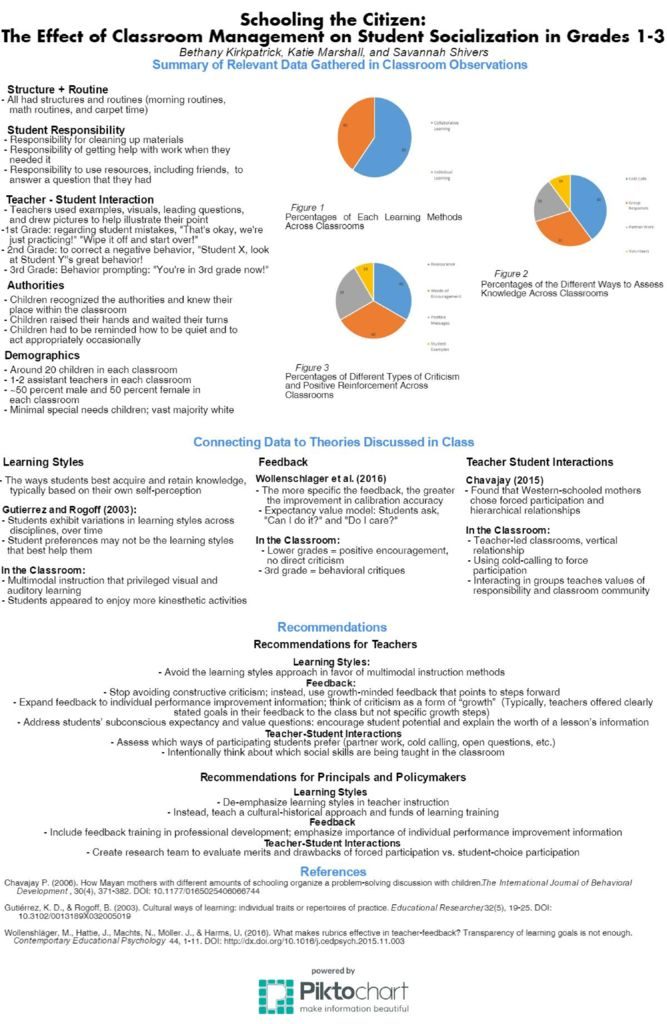Schooling the Citizen:
The Effect of Classroom Management on Student Socialization in Grades 1-3
We observed three separate classrooms that ranged from grades 1-3 for an hour each at the Community School of Davidson, a public charter school. Each class studied a different subject, math, social studies, and language arts respectively. Commonalities arose between all three grades related to classroom management. For example, teachers used positive criticism, behavioral reminders, structured routines, and emphases on both collaboration and individual learning to introduce lessons to their students. Students had a clear understanding of different authorities, structures, and acceptable behaviors, and used these understandings to complete their work and to interact with other students. Teachers emphasized student responsibility more critically in older grades, while choosing positive reinforcement in younger grades. There were also differences across classrooms between the goals of collaborative activities and individual work. We observed a relationship between the three steps of teacher action, student response, and student action. We conclude that the classroom management style of the teacher sought not only to teach a lesson, but also to introduce students to dynamics of peer-to-peer interactions, responses to authority, routine behaviors, and other “real life” skills. Therefore, we believe citizenship skills must be considered a goal of classroom learning at the elementary school level.
